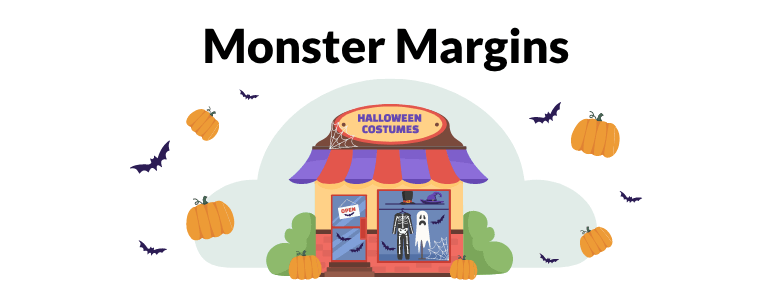Each year, it appears that when it comes to Halloween, the costumes get more elaborate, the decorations bolder, and the receipts a little longer.
We carried out a survey of 3,001 respondents, which found that behind the glitter and fake cobwebs, there is a fascinating story about how Americans are really managing their money during spooky season.
Key Findings:
Half the country is tightening the candy belt this Halloween.
Inflation is still haunting shoppers this year: 52% said they are cutting back on Halloween this year, while 43% plan to spend roughly the same as last year.
A defiant 6% – the “revenge spenders” – say they are splurging more than usual, making up for previous years when budgets or caution dimmed the fun.
Americans are having to prioritize this Halloween.
Asked what they would cut first if money got tight, decorations topped the list at 30%, followed closely by parties (28%).
Costumes and candy each scored 21%, suggesting shoppers still see dressing up and handing out sweets as a non-negotiable. Halloween, it seems, is one tradition where appearances still matter.
Some feel guilt over Halloween spending.
Seven in ten respondents said their Halloween spending is “a small but worth-it indulgence.”
The other 30% admitted it adds stress they “can’t really afford.” For lower-income households, that split may feel sharper – a reminder that even a modest night of fun can carry a price tag that lingers well beyond October 31st.
The biggest pressure? It is pint-sized.
When asked who influences their Halloween spending most, parents overwhelmingly pointed to their kids (46%).
Friends were next at 30%, while social media trailed slightly at 25%. The data suggests that the real trick-or-treat tug-of-war isn’t at the checkout – it’s between keeping up appearances and keeping the budget intact.
Halloween is a recyclable event.
Fourteen percent admit to borrowing money just to host or attend a Halloween party, but more than half (51%) proudly wear the same costume two years in a row.
In an age of fast fashion and Instagram pressure, that’s a quiet act of rebellion – or at least financial realism wrapped in faux cobwebs.
Final Thoughts
Halloween may only last one night, but the way people celebrate it reveals a lot about everyday financial life.
For many, the holiday is a balancing act – between joy and judgment, creativity and constraint.
“It’s heartening to see people finding small ways to celebrate without stretching their wallets,” says Shir Amram, COO at Montana Capital Car Title Loans®. “Our data shows that financial caution doesn’t mean cutting out fun altogether – it just means being clever about how you create it.”

